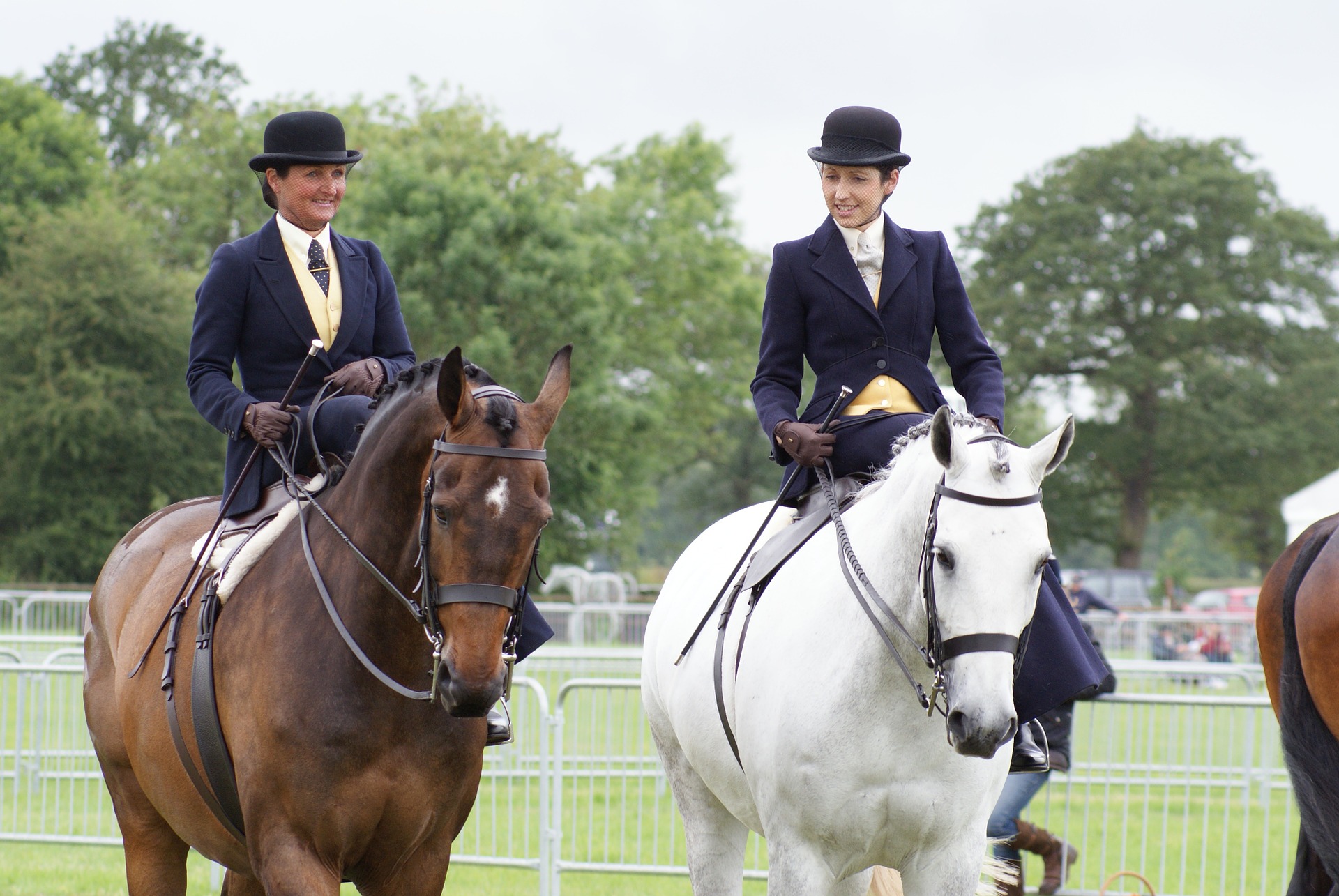The art of equestrianism dates back to 3500 BC, as prehistoric evidence suggests that the early human beings had already domesticated and ridden horses during that time. By the 20th century, the skill was introduced in the Olympics as it became a competition of who could ride the best and fastest horse.
Equestrianism refers to both the skill of riding a horse and the competitive sport showcasing the skill. Nowadays, competitions aren’t limited to who rides the fastest: we also have driving, steeple chasing, vaulting, and more. However, one niche form that’s often overlooked is the skill of side saddle. While it is a form of equestrianism seen as elegant and a sign of a skilled rider today, you may be surprised to learn that the origins of side saddle are quite sexist.
What Is Riding Side Saddle?

Side saddle (can also be spelled as side saddle, depending on whether you’re using American or British English) is an equestrian skill where the rider sits “aside” – with both their legs on one side – rather than the usual “astride,” where the rider sits with one leg on both sides of the horse.
History of Side Saddling
The act of riding side saddle can be traced back to the Greek and Celtic civilizations, but it became popular throughout Europe during the medieval period or the Middle Ages. While some men did practice riding side saddle, nearly all women were expected to ride in this manner. You have to remember that, during this time, there were strong gender roles and, due to the widespread religion throughout the continent, women were expected to be modest and chaste.
During this period, horse riding was seen traditionally as a man’s skill. However, there were times when women had to ride horses. However, because women were not allowed to wear pants until the 19th century, there was the issue of their skirts restricting them from riding like a man, especially if a woman belonged to a higher social class and had fine clothing that could be ruined from riding.

Originally, the earliest solution was for a woman to sit aside a horse, her whole body facing one side, and have a man lead the horse on foot. Another solution in the ninth century was to add a planchette behind the saddle which served as a sort of “passenger seat” for women to sit aside while a man sat on the saddle and drove the horse. In both cases, a woman could not drive the horse herself.
However, there came a point when women – especially women in the gentry and nobility – had to learn how to ride and lead their horse on their own. But aside from the restricting skirts and fine fabric, there was the societal notion that it was unflattering for a woman to straddle a horse. It was impractical (due to the restricting skirt, awkward (because of how the skirt looked), and immodest as women were expected to keep their knees together to maintain the appearance of chastity.
It was believed that a woman seen with her legs astride a horse risked losing her virginity while riding, and for the upper classes that highly regarded a woman’s value by her virginity, this was a risk women weren’t willing to take. There were also excuses that a woman’s thighs were too rounded to cling onto a horse and that, by spreading their legs, it was physically unhygienic for a woman.
While some women such as Catherine the Great, Marie Antoinette, and Diane de Poitiers broke norms and rode astride throughout this period, there was a need to find a way for women to lead their own horse without being immodest. The creation of the side saddle is credited to Anne of Bohemia, the wife of Richard II. The original design made side saddling so difficult that it required another rider sitting astride to lead the horse, but eventually women found it much easier to ride side saddle with smaller horses. This is why men during that time had larger horses than women. It wasn’t until Catherine de Medici’s time did she create a side saddle that allowed women to both ride alone and sit aside, though at a much slower speed compared to men.

While men making a show of riding side saddle was mostly for comedic effect, there were some cases of men riding side saddle. Farm workers were known to ride side saddle when riding around the fields. Even male riders to this day claim that riding side saddle can help mitigate the pain of horse riding when facing back injuries.
The design of the side saddle would continue to develop until it became easier for women to ride and control a horse on their own. Eventually, it became tradition for women in the upper classes to learn how to ride side saddle. While the next few centuries eased up on the expectations of women, it soon became acceptable for women to wear pants. This, coupled with the rise of feminism rejecting restrictions imposed due to patriarchal beliefs of feminine modesty, led to the decline of side saddle usage.
Side Saddling Today
After the decline of side saddling and the introduction of vehicles that eventually replaced horse riding, the act of riding side saddle began to die down. However, while it is an outdated method of riding, some riders have learned to appreciate the old skill of riding side saddle and have added it into horse shows, historical reenactments, parades, and other exhibitions of skill.

In many horse shows, both the riders and the horses are judged on exhibitions of side saddle riding. However, because side saddles have become practically obsolete, side saddles have become a niche in the equestrian market. While there are plenty of old side saddles available, having a new side saddle made is relatively costlier than a regular astride saddle.
How to Ride Side Saddle on a Horse
Riding side saddle requires balance, basic equestrian skills, and a calm horse with a smooth gait (their manner of walking). Here’s a video explaining how women from the early Victorian era learned how to ride side saddle on a horse.
The side saddle differs from a regular saddle in such a way that it is built to support the knees from moving away from the original position while the horse is galloping. As long as the rider has good balance and can keep their center of gravity aligned with their horse’s movements, they can prevent falling off or getting injured from riding side saddle.
Riding Side Saddle Tips
As much as possible, try learning side saddle from professional equestrians rather than learning on your own. The side saddle was meant to prevent the rider from sustaining an injury to their legs and to prevent injury on the horse due to the weight of the person placed on one side.
As much as possible, don’t try to ride side saddle if you haven’t quite grasped the basics of riding astride. While women in earlier periods managed to learn the side saddle without ever having to ride astride, this is for you to learn how to balance, especially if you’re a beginner at equestrianism. If you can’t balance yourself properly (when viewed from behind, your spine should align with that of your horse), your saddle will need to be cinched up tighter than necessary, which could lead to discomfort on your horse’s part, making them less likely to follow your direction.
Practice correct posture when riding side saddle. Not only does it improve your balance, but if you are competing in a side saddle exhibition, your posture will be judged as it affects you and your horse’s overall performance.
Try not to get too comfortable sitting on one side of the horse. As much as possible, you have to learn how to sit aside on both sides of the horse to prevent irregular development on your thigh muscles. When sitting on one side, one leg’s muscles does more work than the other, which could lead to an imbalance if done exclusively on one side.
While side saddle riding has become an obsolete reminder of the oppression placed on women in the name of modesty, the art and skill of balancing one’s self on their horse while sitting aside is one not many in the equestrian field can master. But with the right horse, balance training, and a side saddle, you can begin training for a niche skill that’s sure to impress.



